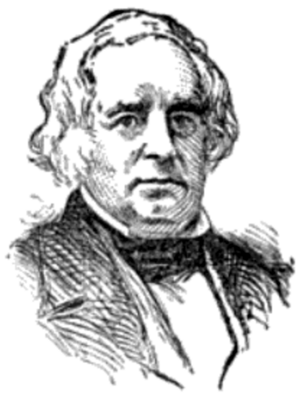Ephraim Williams facts for kids
Quick facts for kids
Ephraim Williams
|
|
|---|---|
 |
|
| Born | March 7, 1715 |
| Died | September 8, 1755 (aged 40) |
| Cause of death | Killed in action |
| Nationality | British American |
| Occupation | Soldier, land owner |
| Known for | Benefactor of Williams College |
Ephraim Williams Jr. (born March 7, 1715 – died September 8, 1755) was a soldier and landowner. He was from the Province of Massachusetts Bay, which was a British colony. He died during the French and Indian War.
Ephraim Williams Jr. is famous because he helped start Williams College. This school is in northwestern Massachusetts. The college's sports teams, called the Ephs, are named after him.
Life Story
Growing Up
Ephraim Jr. was the oldest son of Ephraim Williams Sr. His mother was Elizabeth Jackson Williams. He was born in Newton, Massachusetts, on February 24, 1714. Sadly, his mother died in 1718 after giving birth to his brother, Thomas. Ephraim Jr. was then raised by his grandparents.
His family was very important in western Massachusetts. They were part of a powerful group called the "River Gods." This name came from the Connecticut River, a major waterway nearby. His cousin, Israel Williams, was known for his great influence in the area.
When he was young, Ephraim Jr. worked as a sailor. He traveled to Europe many times. He visited countries like England, Holland, and Spain.
Military Career
In 1742, when he was 27, Ephraim Jr. moved to Stockbridge, Massachusetts. His father had bought a lot of land there from the Mahican tribe. Ephraim Jr. also bought large areas of land in this new settlement. He then joined the local army, called the militia, and became a captain.
In 1745, during King George's War (1745–1748), he was given an important job. He had to build and defend Fort Massachusetts. This fort was part of a line of defenses in western Connecticut and Massachusetts. He was not at the fort when the French attacked and destroyed it in August 1746.
After the war, Williams worked hard to help new towns grow. These towns were in the western part of Massachusetts along the Hoosac River. Many early settlers there were soldiers who had been at Fort Massachusetts. Williams himself was one of them.
Just a few years later, Williams was called to serve again. This time it was for the French and Indian War (1754–1763). Williams was now a colonel. He led a group of ten companies in William Johnson's plan to attack Crown Point, New York. Famous groups like Burke's Rangers and Rogers' Rangers were part of his regiment. One of his helpers was William Williams from Connecticut. This William Williams later signed the Declaration of Independence.
Ephraim Williams Jr. was killed on September 8, 1755. He was shot in the head during an ambush by the French and their Native American allies. This happened during the Battle of Lake George. He was 40 years old. His soldiers hid his body after the battle. They buried him nearby to protect his remains.
In the early 1900s, his body was moved. It was reburied at the chapel at Williams College. A stone with Williams' initials and the year he died is still at his first grave site. It is across the street from a monument. This monument was put up by Williams College alumni. It marks the spot of the ambush, which was called the Bloody Morning Scout.
His Lasting Impact
Ephraim Williams left his large estate to start a free school. This school was to be built on his land in western Massachusetts. He had some conditions for this gift. The town had to be renamed after him (Williamstown, Massachusetts, was formerly West Hoosac). The town also had to be part of the Massachusetts Bay Colony. And the free school had to be built on the land he gave.
He had first planned to start a school for Native Americans in Stockbridge. But he worried that his political rivals might try to control the project after he died. So, he changed his plans. The school was officially started in 1791. In 1793, the state government changed it into Williams College.
Ebenezer Fitch was the first president of Williams College. In 1802, he wrote about Ephraim Jr. He said Williams was "large and fleshy." He also described him as friendly and charming. Fitch wrote that Williams could "make himself agreeable in all companies." He was "very generally esteemed, respected, and beloved."
There are some ideas online that Ephraim Williams appears in an early version of the song "Yankee Doodle":
- Brother Ephraim sold his Cow
- And bought him a Commission;
- And then he went to Canada
- To fight for the Nation;
- But when Ephraim he came home
- He proved an arrant Coward,
- He wouldn't fight the Frenchmen there
- For fear of being devour'd.
However, most people who suggest this just repeat old ideas. They don't have strong proof. Most experts do not connect this "arrant Coward" to the hero of the French and Indian War.
The song "Yankee Doodle" was originally used by the British to make fun of American colonists. But the colonists took the song and made it their own. It became a popular marching tune. Eventually, "Yankee" became another name for Americans around the world. Some believe the first known version of the song was about Ephraim Williams. He fought the French at the Battle of Fort Ticonderoga and the Battle of the Bloody Morning Scout.


